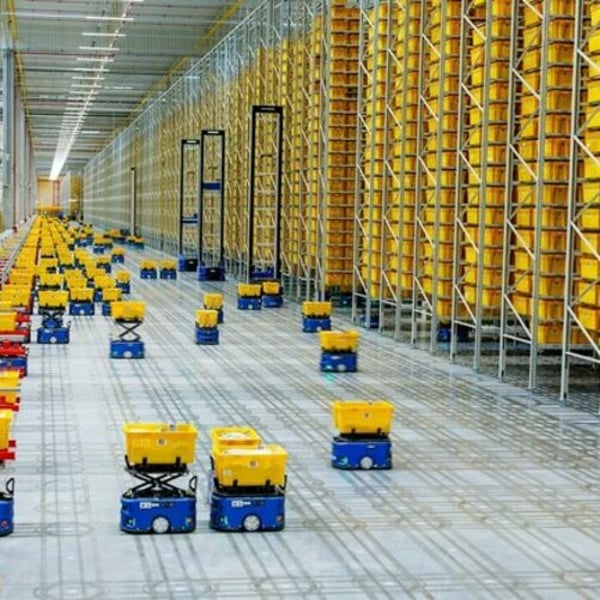Fashion
Germany’s Zalando strengthens leadership with new CFO Anna Dimitrova

Zalando has appointed Anna Dimitrova as CFO effective January 1, 2026, adding over 20 years of international finance and strategy experience.
She joins from Deutsche Glasfaser and previously held senior roles at Vodafone.
Dimitrova will support Zalando’s pan-European ecosystem strategy, driving growth, transformation, and long-term value creation.
Source link
Fashion
US’ Nike Q2 FY26 revenue edges up despite sharp fall in direct sales

The wholesale revenues rose 8 per cent to $7.5 billion, driven largely by strength in North America. In contrast, Nike direct revenues declined 8 per cent to $4.6 billion on a reported basis and fell 9 per cent on a currency-neutral basis, reflecting weaker digital and owned-store sales.
Nike, Inc has reported mixed Q2 FY26 results, with revenues rising 1 per cent to $12.4 billion.
Wholesale sales grew 8 per cent, driven by North America, while Nike direct declined amid weaker digital demand.
Gross margin fell 300 bps to 40.6 per cent due to higher tariffs.
Net income and diluted EPS dropped 32 per cent, highlighting continued margin pressure.
The gross margin fell sharply by 300 basis points (bps) year on year (YoY) to 40.6 per cent, primarily due to higher tariffs in North America. Net income declined 32 per cent to $0.8 billion, while diluted earnings per share dropped 32 per cent to $0.53, Nike said in a press release.
By segment, Nike Brand revenues increased 1 per cent to $12.1 billion, supported by growth in North America, partially offset by declines in Greater China and Asia Pacific and Latin America (APLA). Nike direct revenues were impacted by a 14 per cent decline in Nike Brand Digital sales and a 3 per cent drop in Nike-owned stores. Converse revenues fell sharply by 30 per cent to $300 million, reflecting declines across all regions.
Selling and administrative expenses rose 1 per cent to $4.0 billion. Demand creation expenses increased 13 per cent to $1.3 billion, driven by higher brand and sports marketing spend, while operating overhead costs declined 4 per cent to $2.8 billion due to lower wage-related and administrative expenses. The effective tax rate rose to 20.7 per cent from 17.9 per cent a year earlier.
On the balance sheet, inventories stood at $7.7 billion, down 3 per cent YoY, reflecting lower unit levels partially offset by higher product costs linked to tariffs. Cash, cash equivalents and short-term investments declined by about $1.4 billion to $8.3 billion, as operating cash flow was offset by dividends, bond repayments, share buybacks and capital expenditure, added the release.
“Nike is in the middle innings of our comeback. We are making progress in the areas we prioritised first and remain confident in the actions we’re taking to drive the long-term growth and profitability of our brands,” said Elliott Hill, president and chief executive officer (CEO) of Nike.
“FY26 continues to be a year of taking action through Win Now, including realigning our teams, strengthening partner relationships, rebalancing our portfolio, and winning on the ground. We’re finding our rhythm in our new sport offence and setting ourselves up for the next phase of athlete-centered innovation in an elevated and integrated marketplace,” added Hill.
“In the second quarter, we demonstrated the resilience of our portfolio, delivering modest top-line reported growth while managing headwinds from repositioning our business in a dynamic operating environment,” he said. “We are making the shifts required to position our portfolio for a full recovery and driving real-time decisions in service of the long-term health of our brands,” said Matthew Friend, executive vice president and chief financial officer (CFO) of Nike.
For the first six months of FY26, Nike reported revenues of $24.1 billion, up 1 per cent YoY, while net income fell 31 per cent to $1.5 billion, underscoring the continued impact of margin pressures despite stable top-line performance.
Fibre2Fashion News Desk (SG)
Fashion
US manufacturing capex, hiring set to rise in 2026: ISM forecast

The outlook reflects improving confidence among purchasing and supply management executives, with revenues expected to increase in 16 of 18 manufacturing industries in 2026. ISM noted that after moderate growth in the first half of the year, manufacturing activity is projected to accelerate in the second half, ISM said in a press release.
In manufacturing, 56 per cent of survey respondents expect revenues to be higher in 2026 than in 2025, with overall manufacturing revenues forecast to rise by a net 4.4 per cent, compared with a 2.5 per cent increase reported for 2025. Despite manufacturing remaining in contraction for the ninth consecutive month in November, executives remain optimistic about a turnaround as the year progresses.
Manufacturing capital expenditures in the US are forecast to rise 3 per cent in 2026 after a 3.5 per cent increase in 2025, while manufacturing employment is expected to grow 0.4 percentage point, according to ISM.
Revenues are projected to increase in most industries, with overall manufacturing revenues up 4.4 per cent.
A stronger second-half momentum supports cautious optimism for 2026.
Manufacturers reported operating at 82.4 per cent of normal capacity, up from 79.2 per cent in May 2025. Production capacity increased 2.8 per cent in 2025 and is expected to expand more sharply by 5.2 per cent in 2026, supported by additional hiring, investment in plant and equipment, longer operating hours, and the replacement of older machinery with more advanced technology.
While 2025 capital expenditures exceeded earlier expectations, rising 3.5 per cent on average, manufacturers anticipate a further 3 per cent increase in 2026. Apparel, transportation equipment, and machinery are among the industries forecasting higher capital outlays next year.
Prices paid for raw materials rose 5.4 per cent in 2025 and are forecast to increase by a net 4.4 per cent in 2026. Labour and benefit costs are expected to rise 2.5 per cent, reflecting continued wage pressures amid a tightening labour market.
On trade, manufacturers expect export activity to increase in the first half of 2026, while imports are projected to remain broadly unchanged. Inventory-to-sales ratios are forecast to edge lower, indicating continued focus on inventory discipline and working capital management, added the release.
Despite expectations of growth, survey respondents are less optimistic about 2026 than they were about 2025 a year earlier. Forty-four per cent believe 2026 will be better than 2025, 37 per cent expect conditions to remain the same, and 19 per cent believe 2026 will be worse. The resulting diffusion index for the 2026 outlook stands at 62.4 per cent, slightly lower than the 63.5 per cent recorded for 2025, suggesting cautious optimism amid lingering economic and cost uncertainties.
Fibre2Fashion News Desk (SG)
Fashion
Shein opens its principal European logistics hub in Poland

By
Europa Press
Published
December 22, 2025
Chinese online retailer Shein has opened its new logistics centre in Wroclaw, Poland, which will become the company’s main hub on the continent and enable faster deliveries to more than 100 million customers across Europe.
The centre will take the total number of jobs Shein generates in the Polish province of Lower Silesia to at least 5,000, the company said on Monday. Shein established its first European logistics operations in 2022.
The logistics centre features state-of-the-art robotic picking systems and automated sorting lines that, the company says, will enable a faster, more efficient workflow. At full capacity, the facility will offer 740,000 square metres of logistics space in the Wroclaw region.
“We are proud to officially open our new facility in Poland, where Wroclaw, in particular, has been a strategic base for our European logistics since 2022,” said Leonard Lin, president of Shein for the EMEA (Europe, Middle East, and Africa) region.
“With advanced warehouse facilities, solid infrastructure, convenient transport links to major European cities, and a large pool of skilled talent, Wroclaw and the surrounding area make for a highly attractive hub for the logistics industry. We look forward to continuing to create more jobs while enhancing our customers’ experience,” Lin added.
This article is an automatic translation.
Click here to read the original article.
Copyright © 2025 Europa Press. Está expresamente prohibida la redistribución y la redifusión de todo o parte de los contenidos de esta web sin su previo y expreso consentimiento.
-

 Business1 week ago
Business1 week agoHitting The ‘High Notes’ In Ties: Nepal Set To Lift Ban On Indian Bills Above ₹100
-

 Business1 week ago
Business1 week agoStudying Abroad Is Costly, But Not Impossible: Experts On Smarter Financial Planning
-

 Business1 week ago
Business1 week agoKSE-100 index gains 876 points amid cut in policy rate | The Express Tribune
-

 Sports7 days ago
Sports7 days agoJets defensive lineman rips NFL officials after ejection vs Jaguars
-

 Business4 days ago
Business4 days agoBP names new boss as current CEO leaves after less than two years
-

 Fashion4 days ago
Fashion4 days agoIndonesia’s thrift surge fuels waste and textile industry woes
-

 Tech1 week ago
Tech1 week agoFor the First Time, AI Analyzes Language as Well as a Human Expert
-

 Entertainment7 days ago
Entertainment7 days agoPrince Harry, Meghan Markle’s 2025 Christmas card: A shift in strategy

















